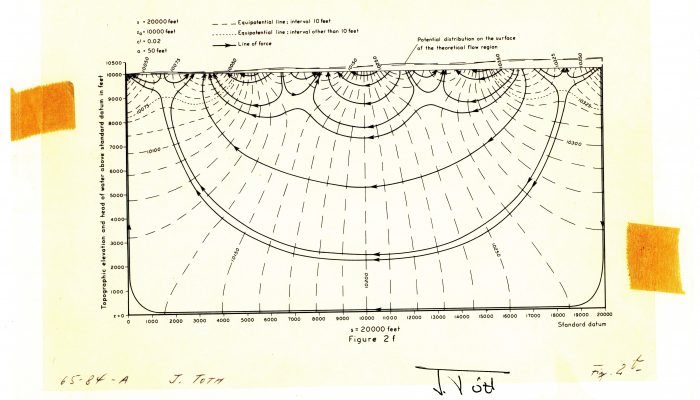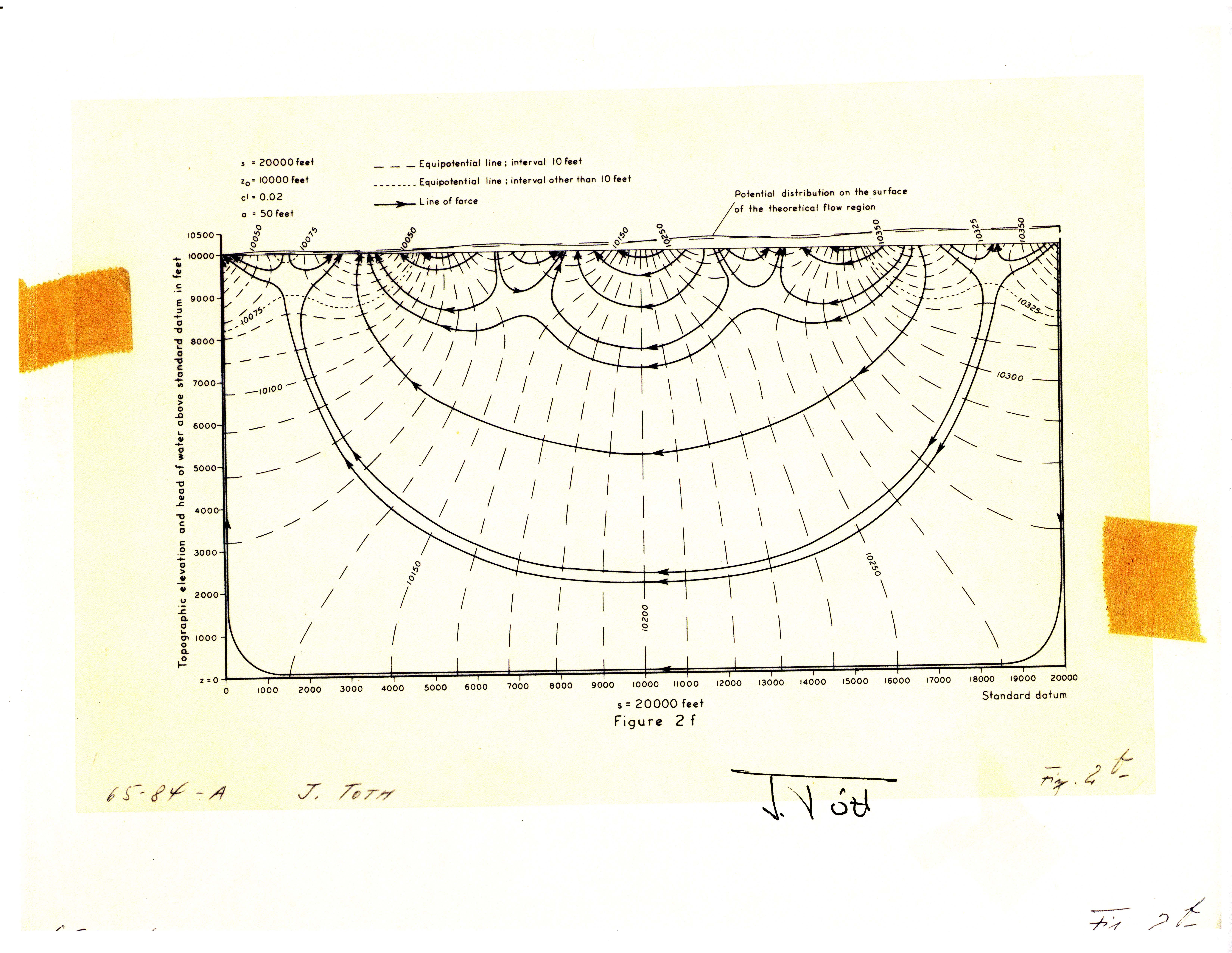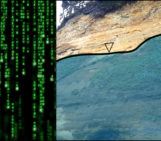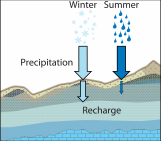
![]() Written by Brian Smerdon
Written by Brian Smerdon
IAH regional groundwater flow commission
In the early 1960’s József Tóth published seminal work on the concept of regional scale flow and nested flow systems. His work built on the “theory of groundwater motion” by M.K. Hubbard, and seemed to come along just at the right moment in history of hydrogeology. Armed with József Tóth’s work, the hydrogeologic community (geologist and engineers) began to see a picture larger than revealed by pumping tests, one that functionally related flow systems and natural processes and phenomena.
Over the past 50 years, the regional scale concept has certainly made a significant contribution to hydrogeology:
- Nearly 1200 GoogleScholar citations
- Special session at GSA’s annual meeting in 2007 (T34-1, T34-2)
- Inverted imagery covering Freeze and Cherry’s textbook
- Formation of the IAH Regional Groundwater Flow Commission (RGFC), whose mission is to foster international research and practical application of the concept through education and research activities, as well as organizing sessions at conferences.
However, one can wonder what the next ‘big step’ in regional flow might be. The list of peer-reviewed articles documenting regional flow evidence is gradually growing, but the basic understanding still links back to the seminal papers. What is the state of regional groundwater flow research? Did it reach maturity sometime in the past 50 years? How does it shape your current research?
To begin exploring the current state of regional flow research, a few discussions were initiated on the Regional Groundwater Flow Commission’s LinkedIn group page. Active supporters appear to have found use for the concept early in their careers, either in characterizing flow systems for better management of water resource, applying it to petroleum exploration, or simply as a basis frame their groundwater research of the moment.
When posed with the question about the future of regional scale research, many supporters shared the opinion that there is more scope for broadening the application across neighboring disciplines, rather than attempting to advance the underlying concept.
On LinkedIn, József Tóth summarized the discussion nicely:
“The regional flow concept has indeed matured in terms of understanding of the structure, effects and controlling factors of flow patterns. Major developments are unlikely to happen in the foreseeable future. However, I expect the concept to be extended by the broadening scope of its practical applications in the various groundwater dependent disciplines.”
Maybe the concept explains everything we can observe so far, such that there is no need for advancement. Maybe emerging methodologies and Earth observation technologies will lead to findings that can’t be explained by the regional flow concept. In this regard, regional groundwater flow research is in the midst of a period of ‘normal science‘, awaiting revolution.
So, perhaps the state of regional groundwater flow research is much like regional flow itself: parts of it are active/dynamic and interacting with other natural systems (i.e. educating the broader geoscience community, finding applications in other scientific disciplines); and parts of it are stagnant (i.e. the basic theory), awaiting for some transient signal to continue the evolution to a new equilibrium.
Let us know what your perspective is by commenting below!






Kris
Toth’s solutions were two-dimensional, linear and simplistic, including topography. In reality chemistry, density stratification, thermal convection, geomechanical coupling and heterogeneity at depth are much more important than surface topography.
It is very easy to get lost in the weeds of all this coupled-processes complexity, and not derive transferable insight like Toth did. We have to understand the complexities of the system, while seeking parsimony and insight rather than numerical simulations that throw in everything including the kitchen sink.
No small task.